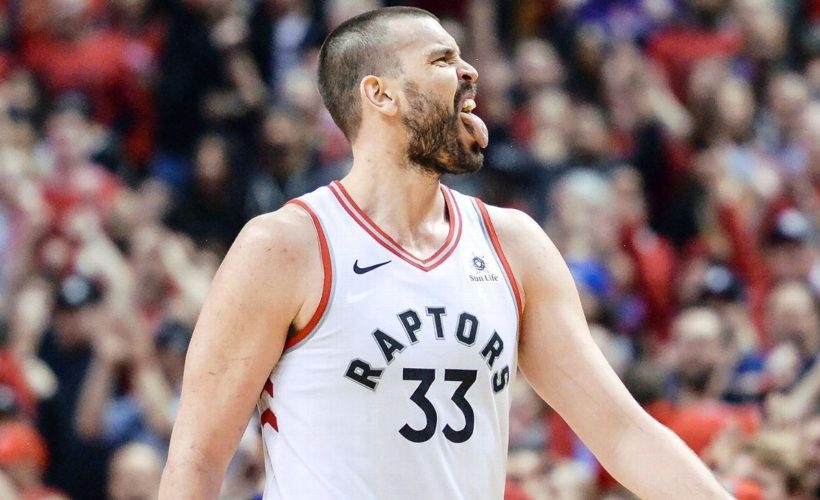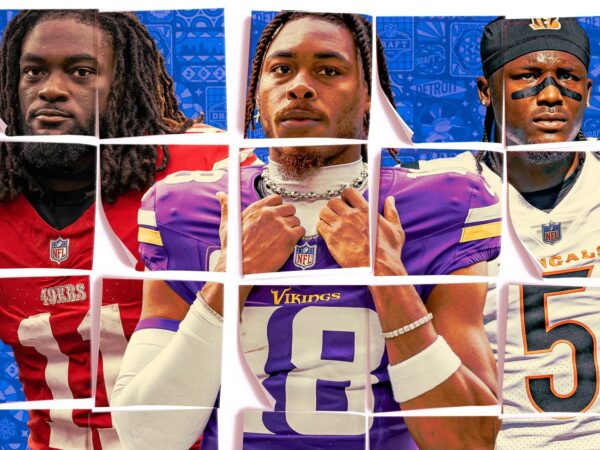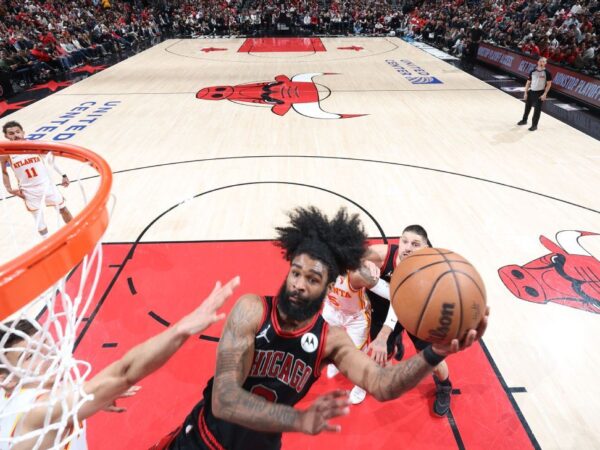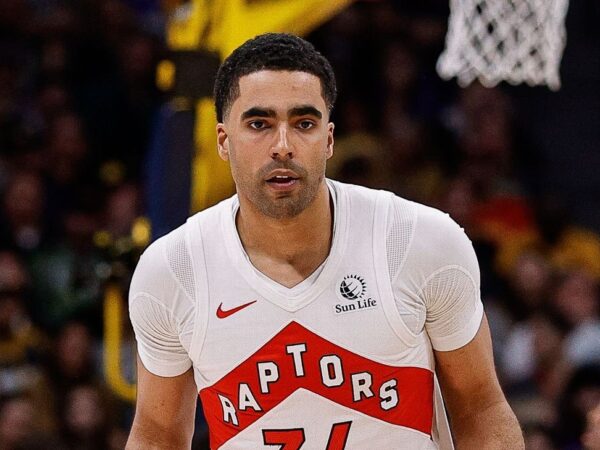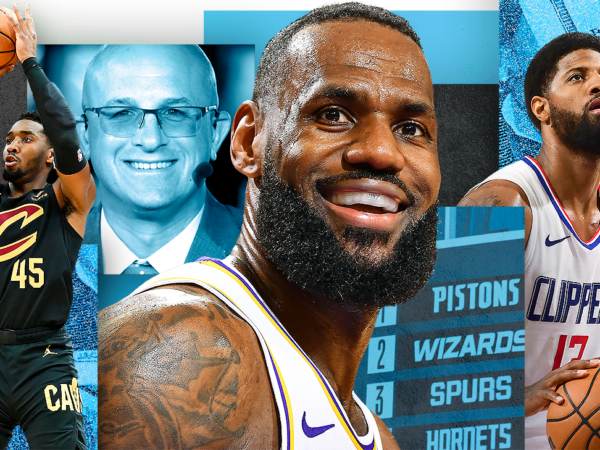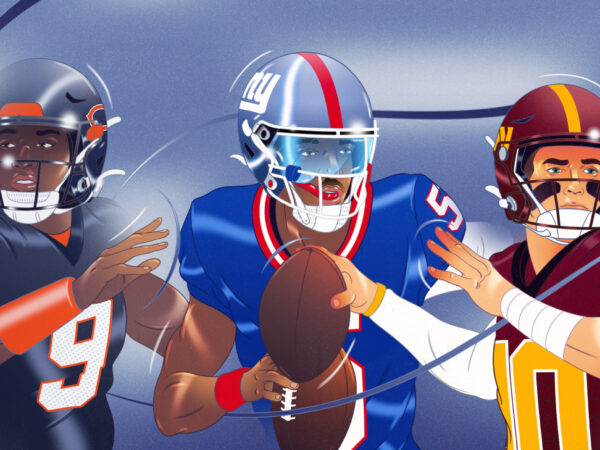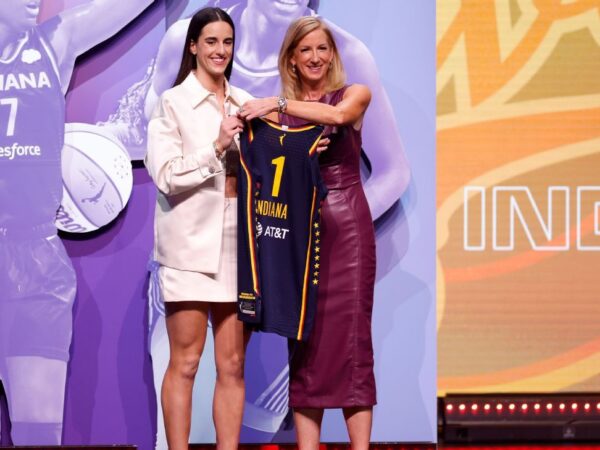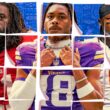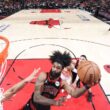HE POSITIONS HIMSELF behind the 3-point line at the top of the key, alone, as the ball is relayed to him. It’s Game 1 of the NBA Finals, early in the first quarter, and as Marc Gasol gathers for the shot — one he hit at a 44.2 percent clip for the Toronto Raptors in the regular season — he aims and initiates his release but then, inexplicably, hesitates.
“Shoot it!” Lionel Hollins implores the image on his television screen, his former Memphis Grizzlies center, who led that team to the Western Conference finals in 2013.
Raptors coach Nick Nurse, pacing the sideline, does not holler at his gifted big man, but his heart rate elevates as he waits. He knows that when Gasol scores more than 10 points in the playoffs, Toronto is tough to beat. (The Raptors are 6-1 when Gasol scores in double figures this postseason.)
There’s another former Gasol coach watching, too. New York Knicks coach David Fizdale can relate to the frustration about Gasol’s reluctance to let it fly. When Gasol and Fizdale were together in Memphis, it was a point of contention. After watching Game 1, Fizdale notes, “You can almost feel Marc saying, ‘Should I?’ But he has to take those shots.”
Fizdale is right. After nearly three seconds tick off — an eternity in today’s fast-paced NBA world — Gasol fires off the trey. It swishes through, one of the six baskets he will convert on a 20-point night that plays a key role in a Raptors win.
Gasol doesn’t fare as well in Game 2. DeMarcus Cousins badgers him with two hard fouls to start the game, and he scores just six points on 2-of-7 shooting with no 3s.
That is a problem for his team.
According to ESPN Stats & Information, Gasol has been one of the league’s most effective 3-point shooters this postseason. Of the 32 players who have taken at least 50 3s in the playoffs, he ranks 12th with a shooting percentage of 38.8. When Gasol drains the long ball, it pays off for the Raptors, opening up the floor for the likes of Kawhi Leonard and Pascal Siakam.
Even the threat of Gasol from beyond the arc is an asset. The two-month Raptor knocked down only one of four shots from beyond the arc but pitched in 17 points, seven rebounds and four assists in 26 minutes in Game 3. Those minutes offered valued space on the floor, and Toronto secured a 2-1 advantage behind its best offensive showing of the Finals.
“We’d like him to shoot them, especially when it’s a rhythm shot,” Nurse says, “but Marc is one of the great big-men passers. It’s always harder to convince guys to shoot more than to convince guys to shoot less. That’s the battle we’re in a little bit with Marc.”
Left unsaid is this: Toronto needs more from its thoughtful big man, who, like so many centers, has had to contend with a shift away from a traditional low-post attack. Fizdale spent a tumultuous year and a half in Memphis insisting that Gasol be a more aggressive scorer, a stretch-5 who could shoot the 3 and excel in a pace-and-space system.
“You know,” Fizdale says, chuckling, “what he’s doing now.
“I tried to tell him, ‘It’s adapt or die.'”
Gasol decided to adapt. But he reserves the right to challenge the coaches who press him to evolve.
MARC GASOL ISN’T a selfish player. His nature is to pass first, shoot later. He has embraced Toronto’s young core and offered his institutional knowledge to them.
“I had never met Marc before,” Raptors guard Fred VanVleet says, “but after five minutes, I felt like I had known him five years.”
Gasol doesn’t clash with coaches because he seeks more shots or more glory. Rather, he expects to be used in proper fashion. He believes that everyone should be treated equally and demands transparency, or you will hear from him.
“I will let you know how I feel,” Gasol says. “But that comes from a point of trust. I’m not going behind anybody. I’m going straight to you and ask, ‘What is this?'”
Nurse knew all that before Toronto acquired Gasol.
“I heard a little bit, especially with the Fiz thing, because there was friction there,” Nurse says, “but we have not had one single problem since Marc got here. He’s been amazing.”
Gasol, 34, has thrived in his new basketball home, playing for a coach, he says, who gives his players freedom to experiment.
“Marc could be a little snippy. You never knew what he was thinking. If something was bothering him, he wouldn’t say anything. I had to pry it out of him.”
Lionel Hollins on a young Marc Gasol
Most NBA veterans who had been dutifully performing in a small-market city with mixed results for more than a decade might contemplate whether their time to compete for meaningful results — championship results — had passed. Most would enthusiastically embrace the possibility of joining a team positioned for a legitimate opportunity in the NBA Finals.
But Gasol isn’t like most NBA players. He planned to begin and end his career in Memphis because there was a job left undone.
“I wanted to stay,” Gasol says with a shrug. “I wanted to fix it. My thought was, ‘Let’s get this turned around.'”
Once Memphis decided to rebuild, it shipped Gasol to Toronto in February for Jonas Valanciunas, Delon Wright, CJ Miles and a 2024 second-round pick. Gasol departed Memphis as the franchise leader in points, rebounds, blocks and made field goals.
In addition to coveting his range, the Raptors thought Gasol could be a valuable defensive asset. In the opening round of the playoffs, Gasol held Orlando big man Nikola Vucevic to 28 percent shooting. In the next round, he held All-Star Joel Embiid to 37 percent shooting (23-of-62).
Nick Nurse is Gasol’s seventh coach in 11 seasons. In his rookie season, Gasol played for three coaches: Marc Iavaroni (41 games), Johnny Davis (two games) and Lionel Hollins (39 games). Such instability could be viewed as a detriment — unless you are Gasol, who sees it as an opportunity.
“Different coaches have different schemes, so for me, it’s about learning and being able to adjust and adapt to these coaches,” he says. “It fills your toolbox.”
When Hollins took over the Grizzlies in 2009, he was entrusted with laying the foundation for the culture of the franchise — and Gasol was a viable choice as a centerpiece. He was a crafty defensive player and an adroit passer, and he exhibited a knack for identifying what was happening a split second before most everyone else on the court. Hollins marveled at how easy new defensive schemes were for him; Gasol was named Defensive Player of the Year in 2013. He was passionate about the game and generous with his teammates. Yet there were certain quirks about his personality.
“Marc could be a little snippy,” Hollins says. “You never knew what he was thinking. If something was bothering him, he wouldn’t say anything. I had to pry it out of him.”
The young version of Gasol was also stubborn. In his early years, he relied on a quick turnaround jump shot that Hollins abhorred. One night, after sinking one of those very shots, he stared at his coach all the way down the floor.
Hollins recalls calling out one of Gasol’s teammates for blowing an assignment. The player became embarrassed and agitated. Hollins reviewed the tape after the game and reaffirmed that he was correct in his assessment, but he apologized to the player anyway, informing him, “I saw the play wrong.”
Within minutes, Gasol was in his office. “He said to me, ‘Coach, why did you lie?'” Hollins says. “‘You were right. He was wrong.’ I explained I was just trying to make peace. But Marc felt accountability was important. You want guys like that.”
In Gasol’s second year, Memphis brought in Zach Randolph, and the center settled in as a willing secondary option. He directed his new teammate where to go on the court and got Randolph the ball exactly where he desired it.
“We played through Marc a lot,” Hollins says. “High post, low post, sort of like how Golden State uses Draymond Green. Marc wasn’t trying to score. He was trying to make a play for the other guys.”
In later years, as the league began trending toward small ball, Hollins moved Randolph to the 5 late in games, which left Gasol on the bench.
“Zach is scoring and rebounding and keeping us ahead with his offense, but Marc is wondering, ‘Why can’t I go back in?'” Hollins says. “At times he didn’t play in the fourth quarter, and it bothered him. I told him the truth: ‘This is the way it is.’ He didn’t like it, didn’t accept it, but he lived with it, and we won because of it.”
Hollins was pushed out of the head job in 2013 and replaced by longtime Grizzlies assistant Dave Joerger. Joerger led Memphis to three playoff appearances in three years but was let go after the third year because of, according to reports, differences with the front office regarding stability and salary. After he departed, new details emerged. Ron Tillery of the Commercial Appeal reported that during a turbulent stretch of the 2015-16 season, Joerger approached a team beat writer and declared, “I think Marc’s trying to get me fired.”
The report stunned Gasol, who says he never made any such suggestions to the front office or ownership.
“Dave called me right after the article appeared, and he was very upset,” Gasol says. “He made it clear to me it wasn’t the case. I told him not to worry. We both knew how it was.”
Joerger, who is traveling overseas, offered his thoughts on Gasol via text: “Marc was great. One of my best friends and teammates I’ve ever coached. The talented ones will push you to be your best because their talent demands it … I’m so happy he’s in the position he’s in now.”
THE MEMPHIS GRIZZLIES had high hopes on May 29, 2016, when they introduced David Fizdale, the wildly popular assistant with the Miami Heat during their championship run with LeBron James, Dwyane Wade and Chris Bosh, as the new head coach.
Gasol intended to approach the latest hire with an open mind, but when Fizdale didn’t retain Randolph and Tony Allen, it became clear that the Grit ‘n’ Grind era in Memphis was over. Gasol wanted to know why. The coach explained that the style of play was outdated, and the window of opportunity had closed. It was a rocky way to start a relationship that never really improved.
“I don’t want gray areas,” Gasol says. “I want us to have one vision, the same unified approach to things, so if something isn’t right, I like to be straightforward.”
“I came in with guns blazing, trying to get them to play faster, shoot more 3s, space the floor,” Fizdale says. “Marc was a big part of that. Most of his career, he played bruising post-up style with Zach.
“Getting him to shoot four more 3s a game at the time sounded a little outrageous. But once he realized the shot wasn’t different, and it added another dimension to our team, he began to embrace it.”
Before 2016-17, Gasol had never taken more than 17 3s in a season. Suddenly, he was taking 263. The next season, he took 320.
“I tried to tell him, ‘It’s adapt or die.'”
David Fizdale on encouraging Marc Gasol to shoot
While the coach and the player were not in sync, they agreed to handle their differences professionally. The schism reached a breaking point following a loss to the Nets in November 2017. The Grizzlies, down big, had mounted a fourth-quarter comeback. Gasol prepared to check back in at his customary eight-minute mark, but Fizdale never called his number. A wounded Gasol told reporters, “If I’m not on the floor, I’m not valued. I’m sure the [coaches] knew that would hurt me the most.” Fizdale said his decision was not personal. “I’m trying to win a game. I’m desperate. I took a risk. Sometimes when you take a risk, you might hurt a player or two.”
The next morning, Fizdale was fired.
“If you want to call it a conflict or whatever, whenever we ran into rough spots, it was me pushing him out of his comfort zone,” Fizdale says now. “And while I’m doing that, I’m trying to build trust in a short amount of time. To my fault, I probably pushed way too hard — which I’m good at.”
Gasol claims he never gave an ultimatum to ownership regarding Fizdale. No matter. The verdict in the court of public opinion had been handed down. Gasol was branded a coach killer, which bothered him enough for him to seek the counsel of LeBron James on the topic.
“You look back,” Gasol admits, “and you think about how you could have handled it differently.”
Six months later, Fizdale was snapped up by the Knicks. His phone was flooded with congratulatory texts, most of which he answered some days later, but there was one that required an immediate response.
“It was Marc,” Fizdale says. “He said, ‘I’m happy for you. I’m sorry for my part [in your firing]. I understand now what you were trying to get me to do.'”
Gasol confirms the text exchange. He says he and Fizdale have both moved on, and their relationship is “great.” Same with Joerger. Each experience, Gasol says, has been an education, a building block.
Marc Gasol shot 273 3-pointers this season. It is a necessary tool in his box now, one that, if properly executed, often tips the scales for the Raptors.
“With years, you change,” Gasol says. “You’re not as hardheaded or stubborn. You are more malleable.”
The big man hesitates for a moment, just as he did when he contemplated that Game 1 3-pointer.
“You grow,” he says. “And you learn.”
Source:ESPN

